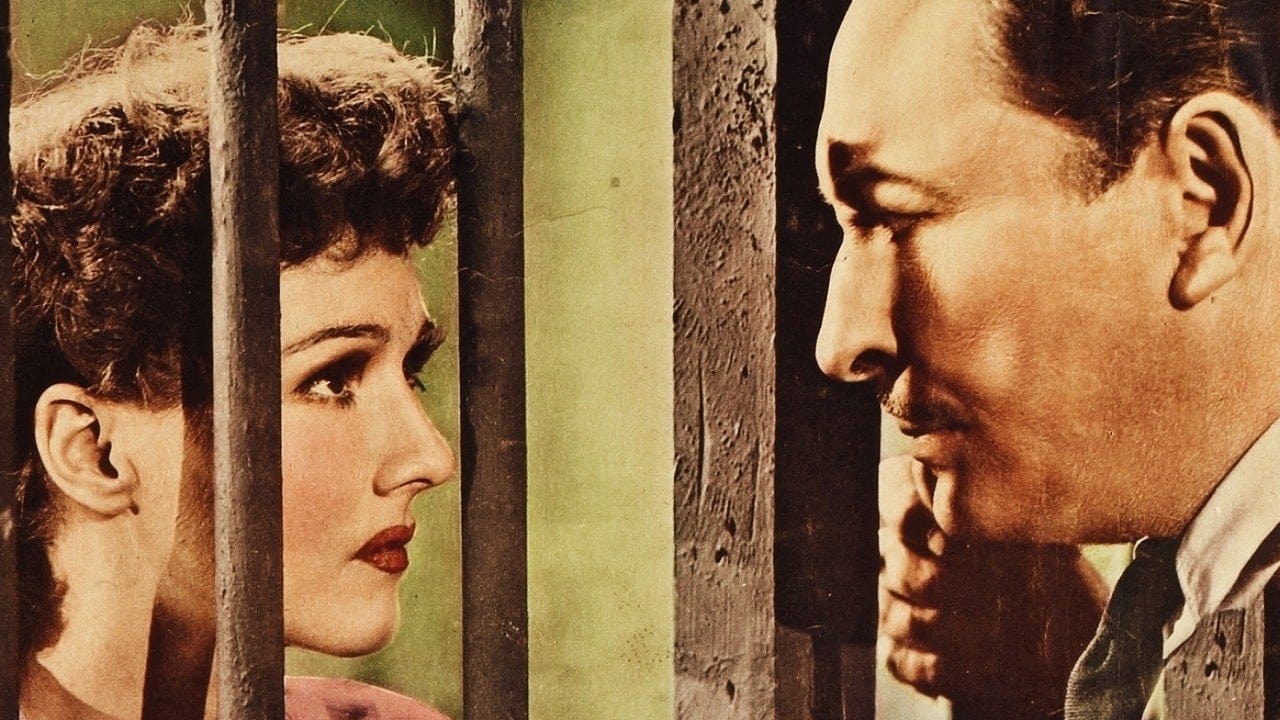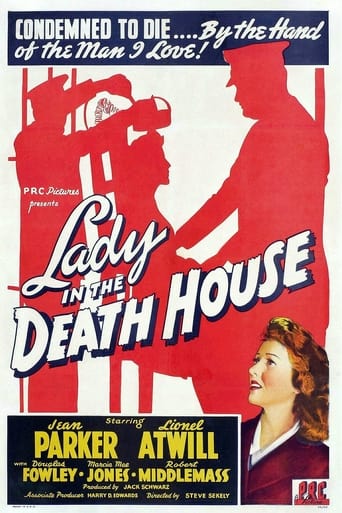


Jean Parker is blackmailed because of a secret from her past. But when the blackmailer ends up dead on the floor, and some people saw this unfold through the window, Parker is arrested and ends up on death row. Shortly before all this happened, she met scientist researcher Douglas Fowley and criminologist Lionel Atwill, and Fowley fell in love with her. He also moonlights as the state executioner however. Atwill doesn't believe Parker is guilty, and thinks Parker's sister Marcia Mae Jones, whom he caught lying on the night of the murder, holds the key to finding the real killer.The movie is told in flashback by Atwill as he recounts the story to some of his colleagues, using a letter Parker wrote shortly before walking to the chair. The actors do a decent job, altho Fowley is surprisingly stiff here.Director Steve Sekely ('Hollow Triumph') and DoP Gus Peterson (ine one of his last movies, his credits go back to 1914!) knew how to quickly and effectively make movies, and it shows. It is told & shot in the typical fashion employed by the low-budget studios, PRC in this case, where pace and economics mattered more than logic (that is: if you have time to think about a plot hole while watching a movie, the movie needs more trimming). It doesn't have a lot of noir visuals, and the movie works better as a mystery, but it's a decent effort that does tick a few boxes.It's not a movie that really demands multiple viewings, but as a quick time-waster, it holds up decently well. 6/10
... View MoreThis movie begins with a young woman by the name of "Mary Kirk Logan" (Jean Parker) writing a letter in prison minutes before she is supposed to be executed for murder. The scene then shifts to a criminologist named "Charles Finch" (Lionel Atwill) as he is reading a portion of the letter to a small group of men who are interested in the story he has to tell. It's at this point that the movie backtracks to the day that the murder occurred. However, rather than reveal any more of this movie I will just say that it contained an adequate amount of mystery and suspense but it was too short (only 56 minutes) and compact to be as effective as it could have been. Of course, a number of movies produced during this particular time were rather abbreviated due to budget constraints so this particular film isn't necessarily an anomaly. Even so the movie suffered as a result and I have rated it accordingly. Slightly below average.
... View MoreBy the extremely humble standard of PRC, this is not a bad movie at all. In fact, if we can accept the somewhat unbelievable manipulations of the plot (e.g. the doomed heroine's boyfriend just happens to the state's official executioner) and the implied but strong criticism of the U.S.A. justice system, it's quite a revelation. Here are just a few of many examples of the script's unstated but strongly implied resumé of slip-shod "justice": Short- sighted Byron Foulger's testimony is, to say the least, highly questionable, but the heroine's totally inept attorney doesn't call him to account at all, and the half asleep judge is so totally incompetent that he too notices nothing unusual in either the testimony itself or the way it is interpreted. Nor presumably does the judge intervene when the jury delivers an obviously half-baked verdict. Worst of all, we are then presented with a careless and totally irresponsible governor – presumably a Republican – who doesn't bother to stay at his desk on the night of the execution, let alone ring the prison or have his secretary stand by at the phone. Instead, he's gadding about at a roadside diner! Fortunately, Lionel Atwill manages to hold the plot together and, despite all, the film does emerge as a second feature winner. Jean Parker makes an attractively convincing heroine, while Douglas Fowley holds down an unusual role as the sympathetic executioner. Available on an excellent Grapevine DVD coupled with the far superior 20th Century Fox "B", Behind Green Lights.
... View MoreMary (Jean Parker) is due to die on the electric chair. She makes the walk towards her fate but there is still hope for a reprieve. The story is told by Charles Finch (Lionel Atwill) in flashback. Will Mary be saved for a crime that she didn't commit...?...While Atwill is quite good, the acting is all rather forgettable. As is the story. I only watched it yesterday and there are already some gaps in my memory. The cast are uninspiring to watch with Marcia Mae Jones's character as Suzi, Parker's sister, being the standout performance. Not because she is any good, but because she is mad. The fadeout techniques between scenes are interesting to begin with but endless repetition cheapens the device. The film also seems rushed. It's not a particularly bad film but it's nothing great.
... View More